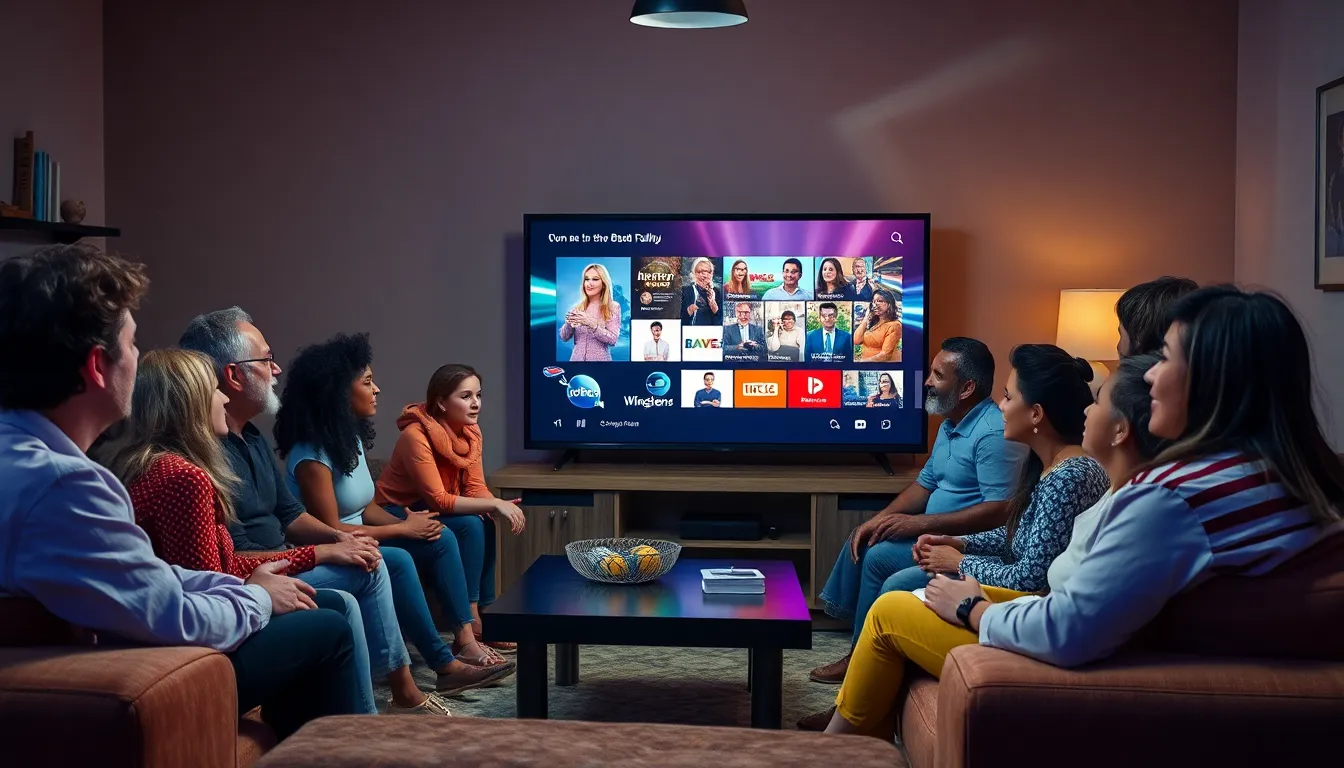In a world where streaming services reign supreme, TV shows are making a surprising comeback, and it’s not just because of nostalgia. Audiences are tuning in, popcorn in hand, ready for the drama, laughs, and unexpected plot twists that only traditional television can deliver. Who knew that flipping through channels could feel like unearthing a hidden treasure trove of entertainment?
Table of Contents
ToggleThe Evolution of TV Comeback
The TV landscape has transformed significantly, adapting to changes in viewer preferences. Traditional television has found a way to regain its popularity, appealing to audiences seeking engaging content.
Historical Context
Television’s rise began in the mid-20th century, becoming a staple in American homes. By the 1950s, shows like “I Love Lucy” captivated millions, establishing the medium as a primary entertainment source. As cable networks emerged in the 1980s, options expanded, showcasing diverse genres. In the 21st century, streaming services disrupted television norms, leading to a seismic shift in how audiences consume content. Despite this evolution, traditional TV has maintained its relevance, finding pathways for resurgence through nostalgia and innovative programming.
Key Moments in TV History
Several key moments have marked significant shifts in television. The premiere of “MTV” in 1981 revolutionized music programming and introduced a new visual style. The debut of “Survivor” in 2000 shifted reality TV into mainstream consciousness, attracting millions of viewers. In the mid-2010s, “Game of Thrones” redefined high-budget production values, leading to a surge in quality scripted content on TV. Each of these milestones demonstrates television’s adaptability and its ability to evolve, paving the way for recent comebacks in traditional broadcasting.
Factors Contributing to a TV Comeback


Television is experiencing a resurgence thanks to several key factors. Audience preferences and technological innovations play significant roles in this revival.
Audience Demand
Viewers increasingly seek diverse and engaging content. Reality shows and serialized dramas captivate audiences, often resulting in high ratings. Demand for live events, like sporting events and award shows, emphasizes the need for traditional TV. Nostalgia for classic shows encourages networks to revamp or reboot beloved series. Audience engagement through social media enhances conversations around these programs, boosting interest and viewership. Networks respond by producing more tailored content that resonates with both older and younger demographics.
Technological Advancements
Technological progress significantly influences television’s comeback. Enhanced streaming capabilities allow viewers to enjoy traditional content alongside newer options. Smart TVs equipped with streaming apps merge both worlds seamlessly, creating a hybrid viewing experience. Improved broadcast quality, including 4K and HDR, elevates traditional TV visuals, attracting discerning viewers. Interactive features also enhance engagement, allowing audiences to participate in real-time polls or discussions. These advancements ensure that traditional television remains relevant and competitive in a rapidly changing media landscape.
Successful Examples of TV Comebacks
Television has seen numerous successful comebacks, showcasing its ability to reinvent and captivate audiences. Several shows have reclaimed their popularity with fresh storylines and engaging characters.
Shows That Made a Strong Return
“Will & Grace” returned in 2017 after a 11-year hiatus, reinvigorating its fan base with timely humor and contemporary issues. “Roseanne” also experienced a revival in 2018, attracting viewers with nostalgia while tackling modern family dynamics. “The X-Files,” after a long absence, resumed in 2016, capturing old fans and new audiences alike with thrilling mysteries. “Fuller House,” a “Full House” sequel, tapped into nostalgia, winning over both parents and their children with familiar faces and updated stories. Each of these series illustrates how strategic reboots can resonate with audiences and generate high ratings.
Impact on the Entertainment Industry
TV comebacks influence the entertainment landscape significantly. Reboots and revivals generate renewed interest in nostalgia-driven programming, leading networks to explore potential revivals of other classic shows. The financial success of these projects encourages investments in original scripts linked to nostalgia. Audience engagement raises the profile of traditional TV, turning it into a competitive force against streaming platforms. Increased social media conversation fuels excitement and interaction, making viewership a shared experience. Data from 2020 shows that reboots can achieve ratings comparable to their original runs, affirming their impact on the industry.
The Role of Streaming Services
Streaming services play a crucial role in the resurgence of traditional TV shows. These platforms expand viewer access and redefine audience engagement.
New Opportunities for Revived Shows
Networks leverage the popularity of streaming services to create new opportunities for revived shows. Revived series can benefit from increased exposure and a previously untapped audience. Services like Netflix and Hulu often invest in reboots, allowing content to reach global viewers. Companies are experimenting with formats that blend traditional TV elements with streaming’s flexibility. Revived shows gain traction through marketing strategies that emphasize nostalgia and community engagement.
Case Studies of Resurrected Series
Successful examples of resurrected series include popular titles like “Will & Grace” and “The X-Files”. Each reboot achieved impressive ratings that rivaled contemporary shows during its original run. “Roseanne” attracted viewership due to its cultural relevance and authentic portrayal of working-class life. “Fuller House” successfully capitalized on the fondness for its predecessor and contributed to the family sitcom genre’s revival. Case studies reveal that strategic reboots resonate with audiences, prompting networks to explore additional revivals.
The revival of traditional TV showcases its enduring appeal in a rapidly evolving media landscape. As audiences seek engaging content that resonates with nostalgia and community, networks are finding innovative ways to adapt. The blend of classic programming with modern technology enhances viewer experience while reigniting interest in beloved series.
Successful revivals prove that there’s a significant appetite for both fresh storylines and familiar faces. This trend not only boosts ratings but also encourages the exploration of new content that captures the essence of what made these shows great.
With strategic marketing and a focus on audience engagement, traditional television is poised to thrive alongside streaming platforms, marking an exciting new chapter in entertainment.




